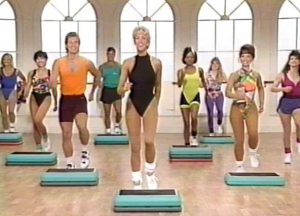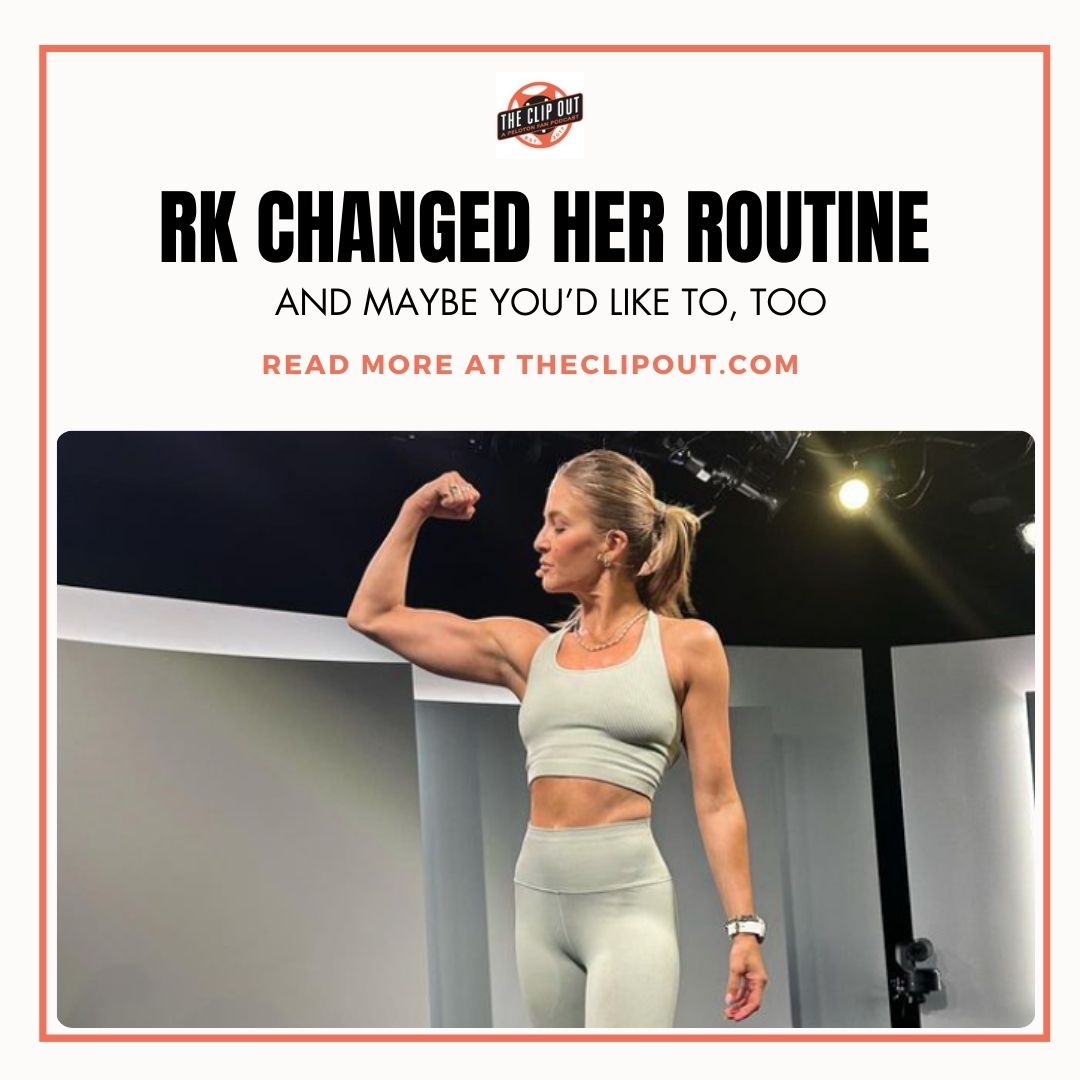Peloton Instructor Rebecca Kennedy Changed Her Workouts, and Maybe You Should Consider It, Too
Ch-Ch Changes
If you’ve been in just about any Peloton group ever over the last year or so, you’ve likely seen this question (or some version of it) at least once: “What’s Rebecca Kennedy’s secret?!?” Well, she’s ready to dish.
Recently, she took to her Instagram to discuss some changes that she’s made in her own personal workout routine. While strolling through the streets of New York on the heels of a particularly challenging Tread Bootcamp class, RK filmed a two-part reel (both of which you can view below), diving into what those changes are and the reason(s) behind them.
View this post on Instagram
View this post on Instagram
Embrace Change, Grow Stronger
In the series, she discusses the gradual changes that she’s made to her workout routine over the last couple of years. And, if you’ve been paying attention to the type of classes she’s been bringing to the Peloton platform, you’ve already seen the clues.
Where RK’s workout routine used to be front-loaded with a lot of high-intensity cardio (running, Tread bootcamps, etc), she has now shifted her focus to prioritizing strength training. In her words, “A heaping serving of strength training, a few sides of low impact cardio, mobility and stretching and just a sprinkleeee of HIIT. That’s my recipe.”
She goes on to explain that making these changes has given her the ability to push harder in HIIT classes and, in her words, have moved the needle for her physical fitness. These changes are particularly evident in her strength classes and programs that now tend to focus on hypertrophy (aka growing her muscles).
While RK isn’t eliminating high intensity cardio from her routine entirely, and isn’t suggesting that you eliminate it either, she has shifted the focus and ratio of work. And, before you start worrying that pulling back on cardio means that you’ll take a hit in the “runner’s high” department, she notes that she still gets endorphins from all of her workouts, even when she scales it down.
Strength Isn’t Given, It’s Earned
The science of fitness backs up RK’s change in routine. As we age, we naturally experience a decline in muscle mass, a process known as sarcopenia. This decline typically starts around age 30 and accelerates with each passing decade. And, while cardio is great for your heart and lungs, it’s regular strength training that helps counteract sarcopenia by promoting muscle hypertrophy.
People can lose 3-5% of their muscle mass per decade after turning 30, and without strength training, this loss can reach up to 30% between the ages of 50 and 70. After 70, the rate of muscle decline accelerates even more. Researchers estimate that individuals between 60 and 70 years old have lost approximately 12% of their muscle mass, while those over 80 years old have lost about 30%. According to the CDC, falls are the leading cause of injury-related deaths among adults aged 65 and older in the United States. Know what leads to many of those falls? According to those studies, it’s a loss of muscle mass and strength.
TLDR; while it might be fun to train for your summer body, it’s even better, and smarter, to train for your old-person body. Study after study after study shows that it’s strength training, not prolonged cardio, that stimulates the production of muscle protein synthesis, which helps maintain and build muscle mass even as we age.
Eternal Sunshine of the Strong Mind
Beyond physical benefits, strength training also has a significant positive impact on mental health. Engaging in regular strength training exercises has been shown to reduce symptoms of anxiety and depression, improve mood, and increase overall cognitive function. The act of lifting weights and completing challenging workouts often leads to a sense of accomplishment and increased self-esteem.
Furthermore, strength training can improve sleep quality and reduce fatigue, contributing to better overall mental and emotional health. In other words, you won’t just look good, you’ll feel good, too.
Dare to Disrupt Your Routine
So, now that we’ve made the case for why you should prioritize strength training, you might be wondering what a strength-focused week of workouts would look like. Of course, you could dive into any one of Rebecca’s excellent strength programs, which we definitely recommend. But, if you’d rather not be locked into a program, here’s an example of a 4-day traditional body split that can easily be used with any class on the Peloton platform, in 45 minutes a day:
Monday: Upper Body (Arms & Shoulders focus)
- 5 minute warm-up
- 20 minute Arms & Shoulders
- 10 minute Extra 10 with a bicep or tricep focus
- 5 minute Core
- 5 minute Upper Body Stretch
Tuesday: Lower Body
- 5 minute Warm Up
- 30 minute Lower Body
- 10 minute Extra 10 with a lower leg or quad focus
- 10 minute Lower Body Stretch
Wednesday: Cardio
- 5 minute Warm Up
- 30+ minute Low Impact Cardio of Choice (walk, bike, LIIT class, hike, easy run, easy row, etc.)
- 5 minute Stretch
- 5 minute Meditation
Thursday: Upper Body (Chest & Back focus)
- 5 minute Warm Up
- 20 minute Chest & Back
- 10 minute Extra 10 with Chest or Back focus
- 5 minute Upper Body Stretch
Friday: Lower Body (Glute Focus)
- 5 minute Warm Up
- 10 minute Lower Body Barre class
- 20 minute Glutes & Legs
- 10 minute Core class or Yoga Focus Flow: Core
- 5 minute Lower Body Stretch
Saturday: Active Recovery
- Easy walk for any amount of time
- 10 minute Full Body Stretch
Sunday: Active Recovery
- 20 minute Yoga Flow
- 5 minute Meditation
And, here’s the easy part. You. Just. Repeat. The. Process. That’s it! Pick up the weights, put the weights down, and pick them up again, over and over and over again. Include a De-Load Week every so often, employ *progressive overload, gradually increasing the weight you lifting over time as you build strength, and you’ll be building serious longevity-enhancing muscle in no time!
Everything Old is New Again
Of note, in a recent Low Impact Cardio Class, RK introduced the idea of using a stepper. You know the kind–like this:

While she herself did not use one, the class was programmed to incorporate one. Does this portend of things to come? We have no idea, but if anyone is going to bring something new to the low-impact corner of the Peloton platform, our money is on RK all day long.
What have you changed in your workout routine that has made a positive impact in your overall fitness? Let us know in the comments!
*Progressive Overload rule of thumb: If you reach reps 8-10 with good form and you cannot possibly lift one more rep, you’re lifting heavy enough. If you reach reps 8-10 and your form has disintegrated, you need to go down in weight. If you reach reps 8-10 and you could easily bang out several more reps, it’s time to increase your weight.
Tune in to The Clip Out every Friday to hear Tom and Crystal’s take on this and other hot Pelotopics. We’re available on Apple Podcasts, Spotify, Google Podcasts, iHeart, TuneIn. Be sure and follow us so you never miss an episode. You can also find the show online on Facebook.com/TheClipOut. While you’re there, like the page and join the group. Lastly, find us on our YouTube channel, YouTube.com/TheClipOut, where you can watch all of our shows.
See something in the Peloton Universe that you think we should know? Visit theclipout.com and click on Submit a Tip!

Subscribe
Keep up with all the Peloton news!








